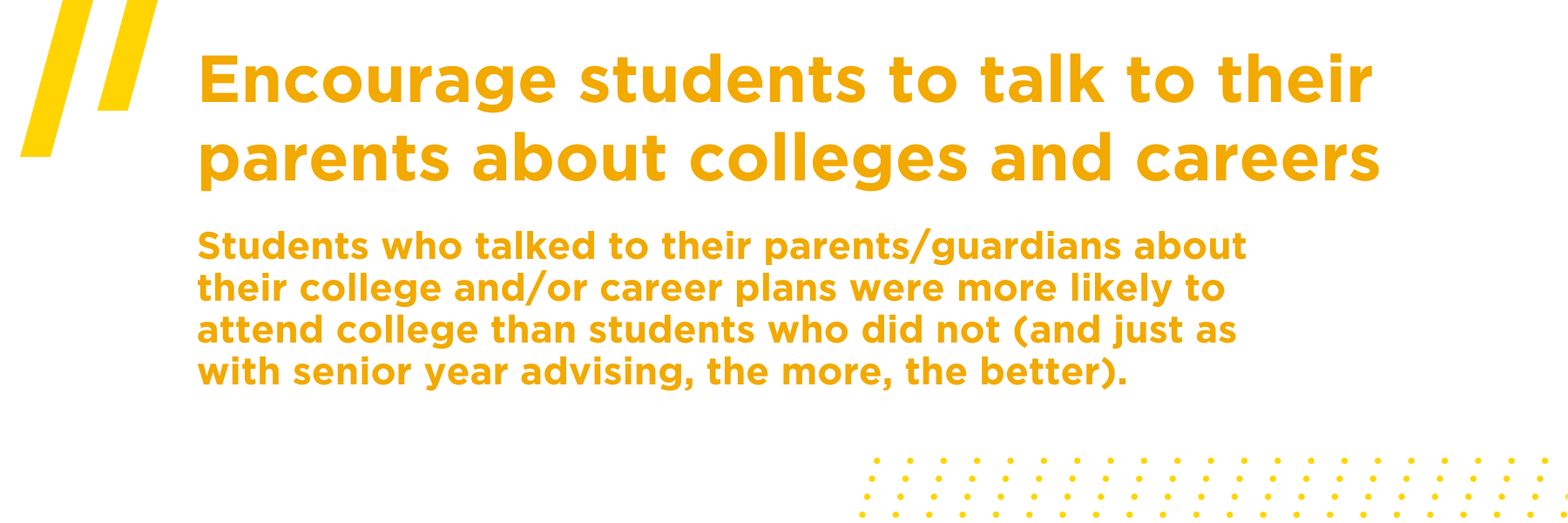Research Recap: Characteristics of Effective Postsecondary Advising

Research Recap: Characteristics of Effective Postsecondary Advising
Many of our program partners devote large amounts of their time and resources to advising students (of many different ages and backgrounds, depending on the program) about how to choose and pursue their postsecondary education goals. Thus, we were excited to find “Characteristics of Effective Postsecondary Advising: How Often to Meet and What to Focus On” in the Journal of College Access. In the article, authors Grace Pai and Melissa De Feo share several key findings that might help college access professionals decide how to focus their advising efforts. Below is a quick summary of their article, which can be read in full through the journal website:
The study picks up where previous research about postsecondary advising has concluded – we know that advising by school counselors and other college access professionals can make a substantial difference in educational outcomes. This is especially true for students that face opportunity gaps, such as English language learners, first-generation and/or low-income students (FG/LI), and students of color. As such, advising provides the foundation for the efforts of many of our program partners, such as TRIO and GEAR UP programs. Exactly what advising services look like, however, may differ greatly between programs, schools, and even students.
In their investigation, authors Pai and De Feo sought to define “high-quality” counseling and advising by identifying the specific characteristics of advising practices (e.g., what material is covered and how often students should receive advising) that were associated with students choosing to attend college (2023, p.30). To do this, they used the results of a survey of 12th grade students who graduated from New York City Department of Education high schools in 2018.
The authors’ findings and their resulting definition of high-quality counseling might help college access professionals decide how they want to define and provide advising for their students in their specific situations. Below are the key findings from the article, which can be read in full through the journal website:



Of course, the extent to which you do those things depends on your specific program and your specific context, and it is very likely that you already do some or all of those things! Research findings do not always need to turn your world upside-down – in fact, they can provide reassurance that you are, in fact, doing a lot of great things.
We do need to acknowledge that this study, like all studies, has limitations. College attendance, as defined by this study, was self-reported via the senior survey (rather than enrollment verification) and only included full-time attendance, which the authors justified with previous research that concluded that full-time college attendees have a much higher likelihood of ultimately graduating. Interestingly, this investigation did not include or control for common measures of student academic achievement (such as GPA), which certainly have an association with students’ college attendance. Finally, we should also keep in mind that this study can only show correlation, rather than causation, because it was not a controlled experiment (again, like many studies in this area).

Contributed By Joanna Full
Joanna Full is an Associate Researcher for the Research, Evaluation & Dissemination Department at the Center for Educational Opportunity Programs. She currently manages the data collection processes and conducts the formative and summative evaluations of several of CEOP’s federally funded college access programs, including GEAR UP and Talent Search.
Follow @CEOPmedia on Twitter to learn more about how our Research, Evaluation, and Dissemination team leverages data and strategic dissemination to improve program outcomes while improving the visibility of college access programs.